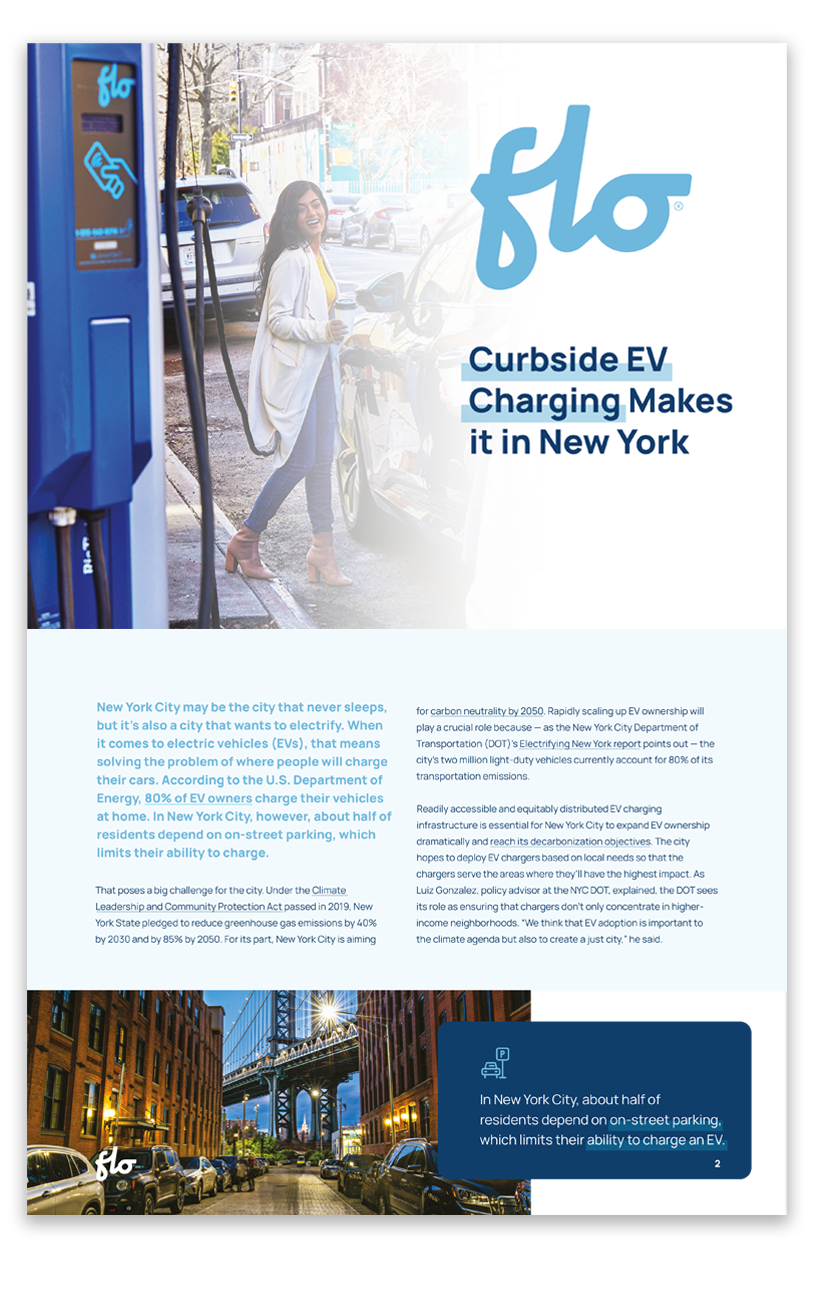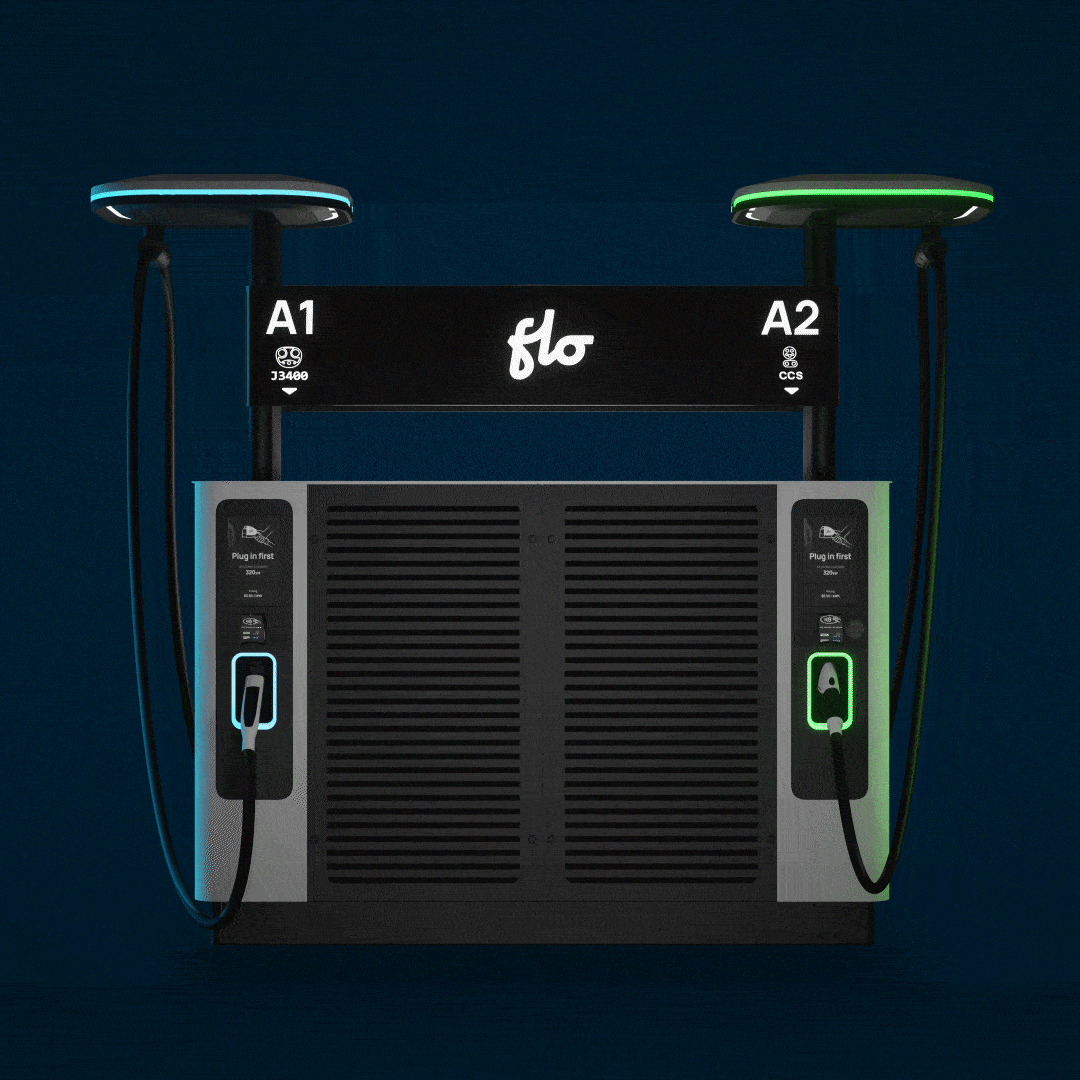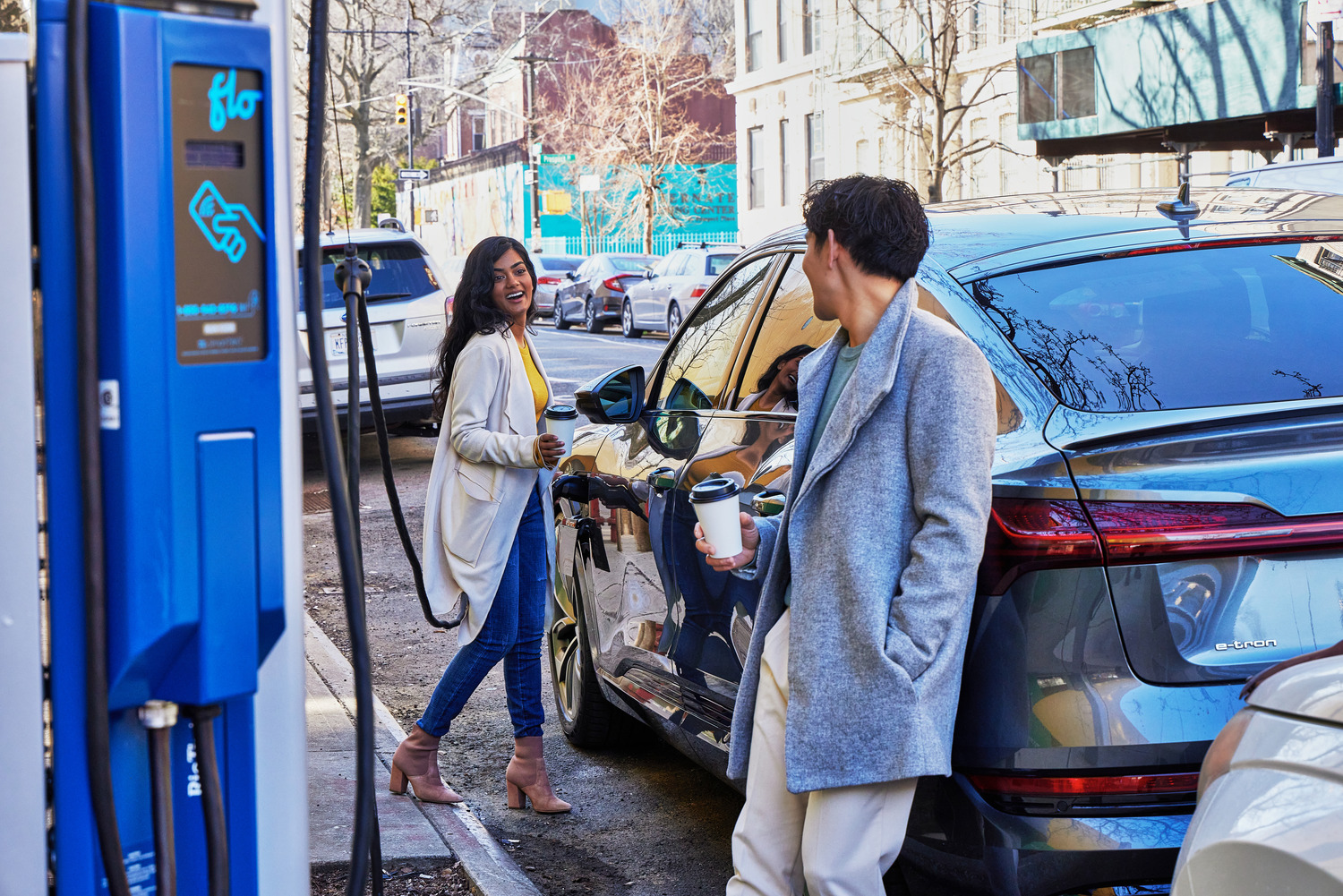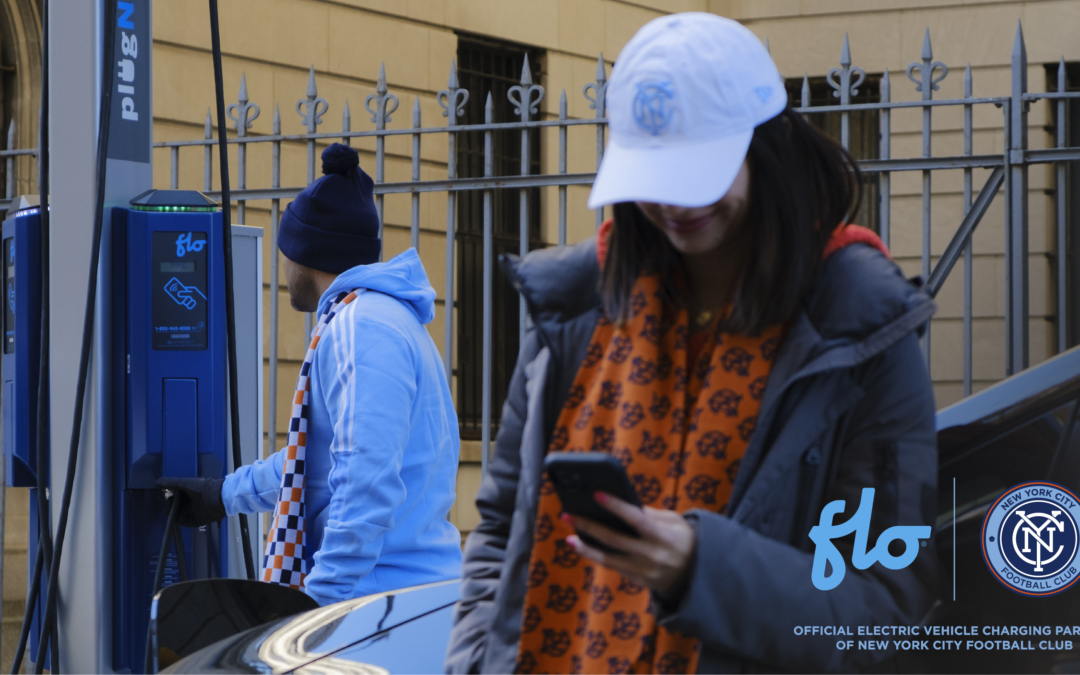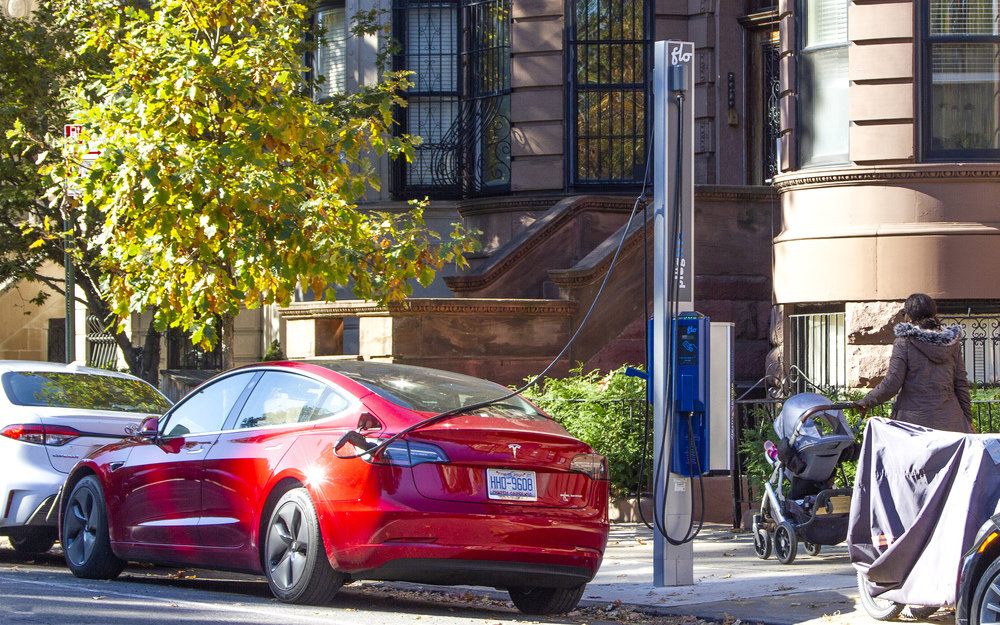Curbside EV Charging Makes it in New York
New York City may be the city that never sleeps, but it’s also a city that wants to electrify. When it comes to electric vehicles (EVs), that means solving the problem of where people will charge their cars. According to the U.S. Department of Energy, 80% of EV owners charge their vehicles at home. In New York City, however, about half of residents depend on on-street parking, which limits their ability to charge.
That poses a big challenge for the city. Under the Climate Leadership and Community Protection Act passed in 2019, New York State pledged to reduce greenhouse gas emissions by 40% by 2030 and by 85% by 2050. For its part, New York City is aiming for carbon neutrality by 2050. Rapidly scaling up EV ownership will play a crucial role because — according to data from the New York City Department of Transportation (DOT) — the city’s two million light-duty vehicles currently account for 80% of its transportation emissions.
Readily accessible and equitably distributed EV charging infrastructure is essential for New York City to expand EV ownership dramatically and reach its decarbonization objectives. The city hopes to deploy EV chargers based on local needs so that the chargers serve the areas where they’ll have the highest impact. NYC DOT has indicated that it sees its role as ensuring that chargers don’t concentrate exclusively in higher-income neighborhoods.
Learn by doing
Last August, the city took a significant step forward in building an equitable EV charging network when FLO®, a leading North American EV charging company, installed its 100th curbside charger in New York City. The installation was part of a pilot program that brought together FLO, the NYC DOT, and Consolidated Edison (Con Edison) to gather lessons about how to rapidly scale the deployment of curbside chargers — and to do so in a way that meets the needs of all New Yorkers. Ultimately, the pilot project deployed chargers in all five of New York City’s boroughs.
From the outset, all three partners knew that siting the chargers equitably and in communities that welcomed them would be a challenge. Con Edison and the DOT spearheaded outreach to neighborhood institutions and political leaders.
“We went to the communities, saying, ’Hey, what do you think about having curbside charging in your neighborhood,’” recalled Roy Rada, manager of electric vehicle demonstration projects for Con Edison. “From DOT we knew that any project involving changes to street parking has the potential to be controversial.”
The DOT used a multi-faceted approach to engage with communities, including meeting early with local city council members, engaging with community boards, and digital outreach. The agency set up an online portal to ensure that neighborhoods had a platform to express their thoughts and opinions about where to install chargers. “We asked communities a lot of questions: Where would they like to see chargers? Can you drop a pin on a map to suggest a good place for it?” noted Susan McSherry, director of the DOT’s alternative fuel programs.
“We really worked hard to engage people and communities and community boards in the site selection process.” SUSAN MCSHERRY, Director of the DOT’s alternative fuel programs
FLO also participated in community outreach. The company brought with them lessons it had gathered deploying curbside charging in cities such as Montreal and Toronto. Brookes Shean, FLO’s sales director in the U.S., says it’s normal for parking- constrained communities to balk at having EV chargers take away traditional parking spots. “Within six to nine months, that negativity changes to them wanting more chargers,” Shean explained.
“Businesses see customers coming in and spending a longer time shopping while their cars charge and new customers from other places stopping and having dinner or lunch because they saw the charger.” BROOKES SHEAN, Sales Director — U.S., FLO

Becoming part of the unique urban landscape
Con Edison and the DOT made it clear that reliability was one of the most critical considerations in selecting the EV chargers to use in the project. If a charger is unavailable when a driver needs it, the potential negative repercussions go beyond a single lost charging session.
“If there’s a charger down, that one person is going to talk to 50 people, and those 50 people are going to talk to 150 people, and it’s going to cascade from there.” BROOKES SHEAN, Sales Director — U.S., FLO
FLO was able to bring to New York City its industry-leading reliability and uptime. As part of a service-level agreement between ConEd and FLO, a team of two dedicated technicians visits the charging stations every two weeks. They inspect and maintain the chargers, cleaning them and removing any graffiti. FLO also collaborates with ChargerHelp INC, a federally certified Disadvantaged Business Enterprise and nationally and state- certified Woman Minority-Owned Business Enterprise. Their team is fully trained and ready to help when needed to ensure the best user experience at all times.
In his work designing products that live in public spaces, Ciocchini has always made decisions based on how people use, respond and react to the product. For this project, he had to balance making the chargers conspicuous yet barely noticeable. “The chargers have to call attention to themselves because you need to be able to find them if you are looking for them,” Ciocchini said. “But if you are out in the neighborhood walking your dog or having a nice stroll in the morning, the charger should not be yelling at you, ‘Hey, I’m here!’”
That wasn’t the only balance Ciocchini needed to consider. On one level, the chargers had to speak the same design language as the city’s benches, lampposts and trash cans. But they also had to communicate the advanced nature of FLO’s EV charger. “FLO has a 21st-century technology that they have created and patented. You don’t want to stick it in a box that belongs in the 1950s,” Ciocchini stated.
“The way the product looks and functions has to be elegant and minimal and communicate to people that it’s high-tech and here for them.” IGNACIO CIOCCHINI, industrial designer, Ciocchini Design
Achieving all the design objectives required many choices and extensive collaboration with FLO engineers and several city agencies.

Lessons learned
Pursuing a pilot project relies upon gathering lessons and insights that apply to the future. In that regard, the pilot has been a big success. Everyone knew going in that a big challenge would be non-EVs parking in spaces designated for charging. That problem has proven true, and the DOT is working with other city agencies to address it.
They have been coordinating with the NYPD [New York Police Department], who do enforcement on the curb. When the DOT receives complaints from the community — be that from elected officials or constituents — they’re in contact with the NYPD to do some enforcement to make sure there isn’t an ongoing issue. The DOT has seen a fair number of tickets being issued indicating there is enforcement happening. They also analyze data from time-lapse cameras to see how often non-EVs block chargers.
Perhaps the most important lesson the stakeholders in the project learned is that the demand for curbside charging is significant. When the project began, Con Edison hoped the average charger use for each day would be 12%, or about three hours. Already, utilization hit 30% in the month of January, with some chargers reaching 75%. “The utilization numbers have greatly exceeded our expectations,” Rada declared.
Another lesson is that the right partnerships deliver results. Rada has worked with many pilot projects over the years, and he rates the cooperation and open communication in this project as the best he has experienced. “FLO has been incredibly responsive and worked to customize the design of the chargers, and the DOT unlocked a lot of doors to make it possible to put chargers on the curb,” Rada said.
“With these three groups working together, the amount of progress we made in a short period of time is remarkable.” ROY RADA, Manager of electric vehicle demonstration projects, Con Edison
Curbside EV Charging Makes it in New York
The number of electric vehicles (EV) in New York City is growing each year as car companies expand options and pass-on lower battery costs to make owning an EV more affordable than ever. As EV adoption grows, New Yorkers will enjoy reduced toxic tailpipe emissions that contribute to smog and climate change, improving the health of our communities, the air, and the environment. EVs are an important part of achieving New York City’s goal of reducing greenhouse gas emissions 80% by 2050.
